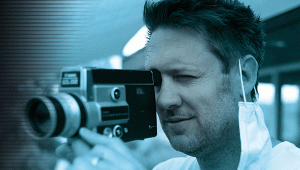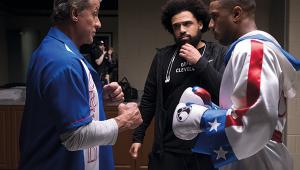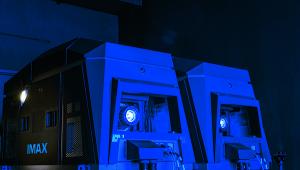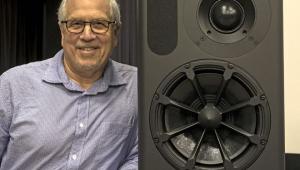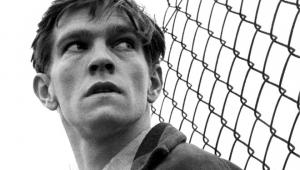The FX secrets of Rise of the Planet of the Apes
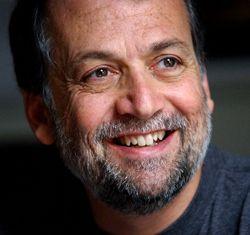
With its reputation confirmed by its CGI character-creation work on the Lord of the Rings movies and Avatar, New Zealand facility Weta Digital seemed the ideal choice to create the myriad simians for Rise of the Planet of the Apes. But how did Joe Letteri, senior visual effects supervisor and a director of the company, tackle the challenge of creating convincing characters?
But the problem of creating the look of Caesar was equally challenging: ‘Creating him so he looks realistic as a chimp, and so he could do the full range of emotion like Andy has, especially in the eyes. We made his eyes slightly more human than a chimp would be. Partly because he has this enhanced intelligence, but also partly you have to read everything in the eyes because he has no dialogue. That was the key focus for us’.
Of course, Rise... presented more of a challenge than the original Planet of the Apes movies, in which the evolved chimpanzees, gorillas and orang-utans were essentially humanoid. They could be portrayed by actors in prosthetics. Rise of the Planet of the Apes stops short of showing the revolution, or explaining how the apes evolve into those more humanoid, speaking forms seen in the original series. ‘So,’ says Letteri, ‘we start off in the present day where chimps are chimps. There was no way to do that with actors in suits, the body proportions are different. You could try all kinds of makeup but in a way that actually limits your performance – an actor has to project through all that latex. What we can do (with motion capture) is take the minute detail Andy does, and translate that to Caesar or what you see on the screen’.

But if creating one ape is difficult, how do you go about creating hundreds – then placing them in convincing environments? It probably helps your enjoyment of the movie if you don’t ask yourself just how many apes there are likely to be in San Francisco, as Letteri laughingly admits. ‘You know… they get around! Okay, how many bullets are there in a gun when you watch a movie?
‘For the Golden Gate Bridge scene, we built a 100-metre span of the bridge, and had hundreds of performance capture cameras all over. Then we built a digital Golden Gate bridge, and we would shoot a little piece, take that photography and put it into the digital bridge. Avatar was much bigger in scope, but for ...Apes we had to pay a lot of attention to the contact between the chimps and the humans because that was the real essence of the film.’
But of course, it’s the interaction between human and ape which has always given the franchise its appeal. ‘Apes are very human and we studied them very closely. Wellington Zoo has a troop of chimps, and we spent a lot of time just watching them feed, and groom, and fight and play and do all the things that apes do. But we didn’t use any real apes in the movie – they were all digital. We made them all!’
Chimprovisation
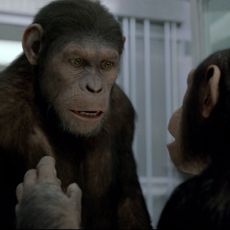 So did the production process involve director Rupert Wyatt racking up plenty of airmiles? ‘We talk before, during, and after each scene. There is a lot of talking. It’s mostly talking about what we are trying to get, is everything in the right place to do it, does it look quite right, would it be better if we did it this way... then Rupert would come back and say, “okay great we will do it this way”, or “I really want something here because I need it for the story later.” It’s like a big jigsaw puzzle. You are putting all the pieces together right until the very last day. We brought everything up to Vancouver during the shoot, but worked remotely via video conference after’.
So did the production process involve director Rupert Wyatt racking up plenty of airmiles? ‘We talk before, during, and after each scene. There is a lot of talking. It’s mostly talking about what we are trying to get, is everything in the right place to do it, does it look quite right, would it be better if we did it this way... then Rupert would come back and say, “okay great we will do it this way”, or “I really want something here because I need it for the story later.” It’s like a big jigsaw puzzle. You are putting all the pieces together right until the very last day. We brought everything up to Vancouver during the shoot, but worked remotely via video conference after’.
So can Letteri imagine a time when digital characters replace actors? ‘Technologically anything could be done if a studio wanted to pay for it, but they wouldn’t pay for that. You have to have the actor, you have to have them on the set, you have to rehearse them, you have to film them, you have to pay for them, and at that point you wouldn’t bother replacing them with something that looks like themselves. I like creating characters that you could never see or do in any other way, but working with actors, because that is where the performance comes from. Then we can create the visual reality of that character married with that performance, and then you get something you have never seen before.’
Of course the quality of the acting then becomes paramount, and no-one quite does motion capture like Andy Serkis. ‘Andy has this unique ability to inhabit these roles. What he does just works really well for us. Maybe because we have worked with him for so long, we can understand the nuance of what he does. Everything you do that brings a character to the screen is like translating a language in a way – the difference between how much an eye is open or closed can really change an expression. We could look at Andy and look at what he is doing there, but if you put it on Caesar and get it off by a millimetre, then it changes the expression – he goes from looking sleepy to looking alert. You have to make that choice frame by frame. That is what we do as animators.
‘Andy didn’t play the role of Caesar as a baby – that was too small, but we looked at chimp babies to see how they would behave. Andy started from when he was a toddler so he was doing all the sign language and playing with the crayons. That was Andy, he’s just a big baby!’

Primate practice
The motion-capture process used to turn an actor’s performance into an animated character demands close cooperation between actor and technician, says Letteri. ‘The first shot of the movie probably took about six months to do. Just to get the first one right. But by the end of the movie you can do 100 or so a week, and you can get it all down because you know what you are doing.
‘We place markers all over the actor’s body. The human skeleton is very mechanical; you can say my arm was here, and now it moved this much, and you can look at all the markers and how it just moved. Then you can make the chimps do the same thing. The face, that’s a little more complicated. We record every frame on the face, but any time you have an emotion your muscles do certain things in certain combinations, and that creates expressions. Chimps have the same muscles, so we take what we think Andy’s muscles are doing and make Caesar’s muscles do the same thing. We go back and keep refining until it is right. It’s a combination of learning software we’ve written and manual control, and when it’s done you go on to the next shot, and you do that about 1,000 times and you’re done!’
With this movie safely in the can, Weta Digital can move on to other projects – and something tells us that the lessons learned on ...Apes will have come in useful when the small, hairy characters of The Hobbit patter onto the screen…
 |
Home Cinema Choice #351 is on sale now, featuring: Samsung S95D flagship OLED TV; Ascendo loudspeakers; Pioneer VSA-LX805 AV receiver; UST projector roundup; 2024’s summer movies; Conan 4K; and more
|


